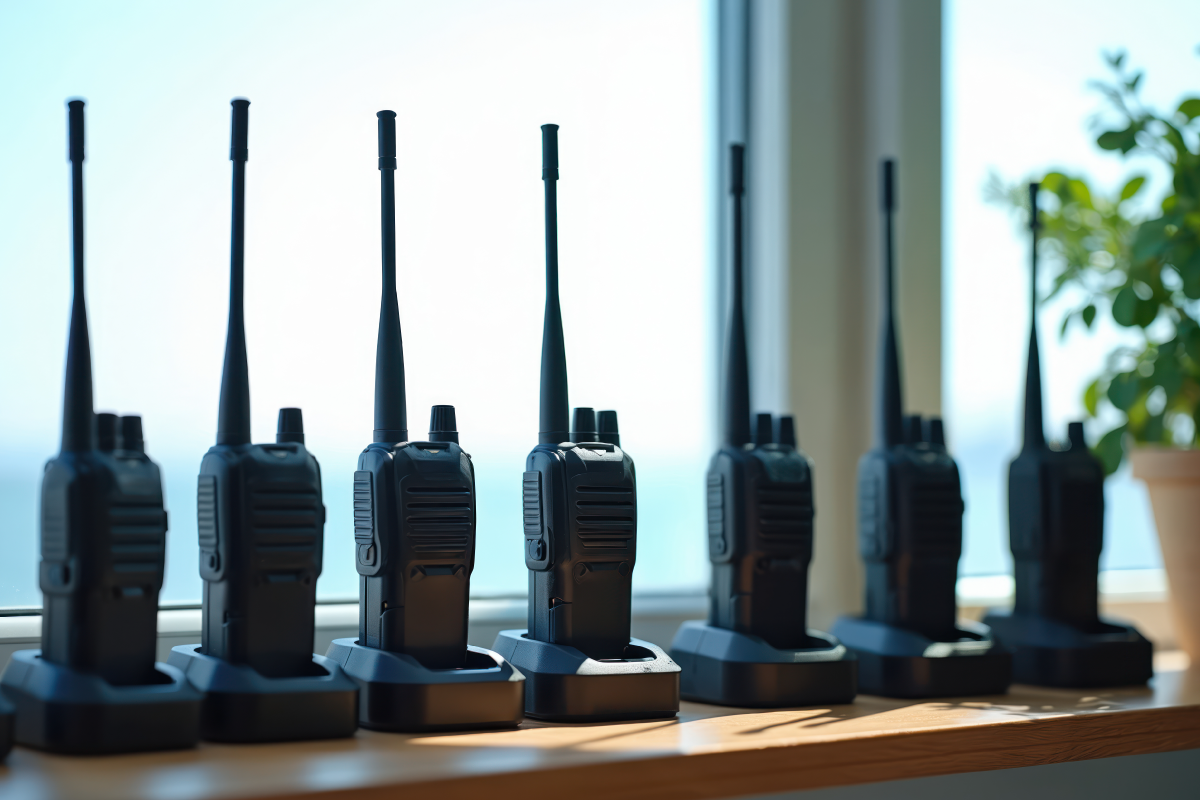The pandemic triggered an avalanche of e-commerce sales and it’s not slowing down. As a result, there has been a significant increase in the demand for warehousing space. In fact, commercial retail estate and investment firm CBRE estimates an additional 400-500 million square feet will be needed over the next five years.
The surge in e-commerce sales has also exacerbated the need for greater warehouse efficiency. The industry has been going through a digital transformation to incorporate technologies for inventory and network optimization, including those enabled through sensors and cellular devices, according to Deloitte’s 2021 MHI Annual Industry Report. With the addition of mobile technology in particular, busy warehouse environments benefit from marked increases in efficiency.
For example, as warehouse employees transition from fixed desktop workstations to smartphones and other mobile devices, they are no longer deskbound and can be on the move when accessing operational systems. Real time tracking can be done on a tablet as inventory is moved from the shelves to shipping, and with video conferencing possible from any location in a facility, employees no longer need to walk from one end of the warehouse to another to find or communicate with other team members. The next hurdle, however, is ensuring reliable cellular connectivity for these mobile devices.
Unique layout causes coverage challenges
Companies will sometimes use Wi-Fi to connect mobile devices in use in their warehouses, but this often results in poor and unreliable coverage that hinders the efficiency desired. On the other hand, cellular networks are known for providing a strong, stable, and secure signal that mobile devices need for consistent performance. The challenge however is that a high percent of warehouses are constructed with metal or are in remote locations or dense industrial areas with obstructions that prevent a strong cellular signal from penetrating into the facilities.
That was the case with a large medical manufacturer based in the metro Houston area. Its million-square-foot facility has a unique layout – it is two-stories high and features a 400,000-square-foot, open warehouse with 50-foot ceilings on one side, and an administrative area with offices and conference rooms on the other side. In addition, the facility is surrounded by high-rise buildings and has a major highway approximately two hundred yards in front of it.
“There were a lot of dead spaces. As you got to the second floor, coverage improved but with the layout of the building there seemed to be a lot of areas where there was no coverage at all. Employees might get a spot where they’d get pretty good coverage and then they’d go around the corner to one of the aisles in the distribution center and it just completely dropped off,” explains Christopher Cisco, Senior Field Service Technician at BearCom, North America’s largest solutions provider and system integrator of wireless voice and data communications equipment. BearCom was brought in by the medical manufacturer to solve its cellular coverage issues throughout the facility so that employees – including facility managers – had reliable coverage for all four major carriers.
CEL-FI QUATRA solves the problem
Cisco says he and his team had sit-down meetings with the client to understand where the manufacturer wanted specific coverage. The warehouse presented a unique situation due to the construction of additions to the facility over the years, resulting in certain areas that were open while other areas were more confined and enclosed in solid concrete. Plus, there were certain areas where the manufacturer didn’t need coverage – for example in sterile environments on the first floor where cellphones are not allowed. “We came up with a solution with our engineering team and chose CEL-FI QUATRA because of its ease of install and the size of the building,” says Cisco.
CEL-FI QUATRA specifically addresses the challenges of poor voice quality, dropped calls, and dead zones in large commercial facilities. Unlike analog boosters and older passive DAS systems, QUATRA delivers a cellular signal that is up to 1000x stronger, offering a much larger coverage footprint. QUATRA uses category cabling with Power over Ethernet, so there is no need to install additional power outlets for the internal remote antennas.
Guaranteed phone calls inside the warehouse
According to Cisco, a team of three installed two CEL-FI QUATRA systems: one in the warehouse and one in the administrative side of the facility. “The layout of the building and the way it was designed made it a bit challenging because there were only certain locations where we could put the head-end equipment – the QUATRA Network Unit – and still get access to the donor antennas on the roof. So it was a really big challenge as far as the infrastructure but we installed the two systems and placed the coverage units in the key areas where they really wanted coverage but didn’t have it before,” he explains.
“Because it’s a very high traffic distribution center and there are tons of forklifts and robotics and people, we had to be meticulous in our planning with lifts and maneuvering to get everything mounted. But we came up with a really good solution to mount the system and the coverage units in the warehouse and it turned out really well,” says Cisco.
Once BearCom completed the installation, the team did signal and speed tests near the areas where the coverage units were placed and saw a significant increase in signal strength. “Certain areas in the warehouse where there was no coverage before can now be used to place phone calls. I was happy with the performance overall and can guarantee phone calls in the entire building,” adds Cisco.
Choosing the right solution
When picking a solution to improve cellular coverage in your warehouse, start off by determining and prioritizing the areas where your business demands reliable cellular coverage. Then, do a walk-through of your facility, or have a wireless expert do it, to determine what you’re up against and where you need to focus your efforts. And finally, keep the following questions in mind when choosing a solution for boosting cellular connectivity in your warehouse:
- What is the actual coverage footprint of the system (not just the specifications)?
- What is the cost per foot?
- Is it easy to install?
- Is it network-safe and carrier-grade?
- Is it scalable and future-proof?
To see how to other companies have overcome cellular coverage challenges in their warehouses with CEL-FI products, download the Warehouse & Distribution eBook.
A version of this article was originally published by Connected Real Estate Magazine.




